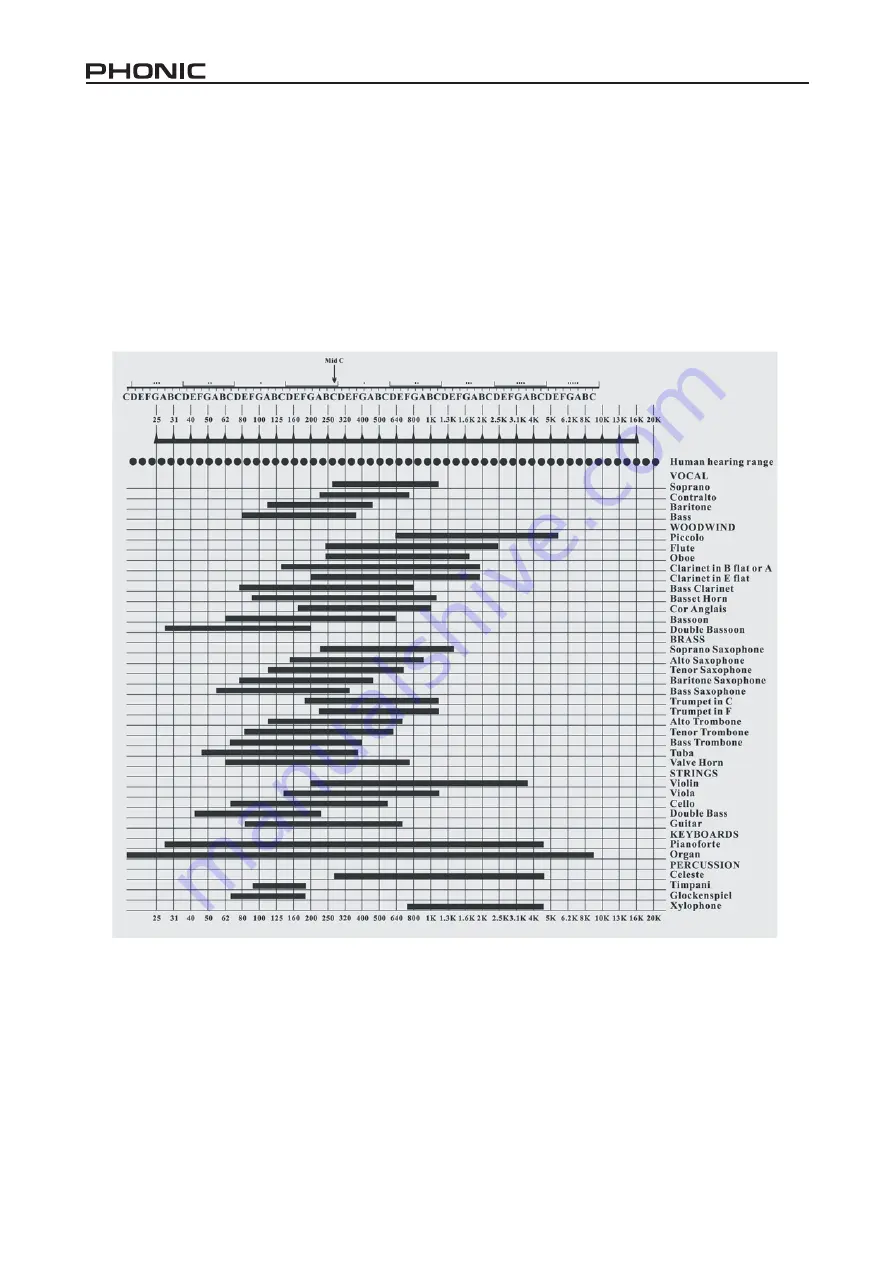
A6600B
LARGE ROOM EQUALIZATION
Large rooms tend to suffer from multiple refl ections with long time delays and long reverberation intervals factors
which lead to reduced intelligibility and a generally muddy sound. As sound travels long distances, high frequencies
attenuate more than low frequencies. In general, a large room benefits from some low frequency roll-off and some
high frequency boost. Therefore, reducing the low frequency output may be advantageous in buildings made of
concrete or stone, where much of the bass is reflected rather than absorbed. Rolling off the high frequency end
above kHz may also contribute to a more natural sound. The shape of the optimal house curve varies according
to the individual sound system and acoustic environment; a degree of experience is indispensible to achieving the
best result.
































